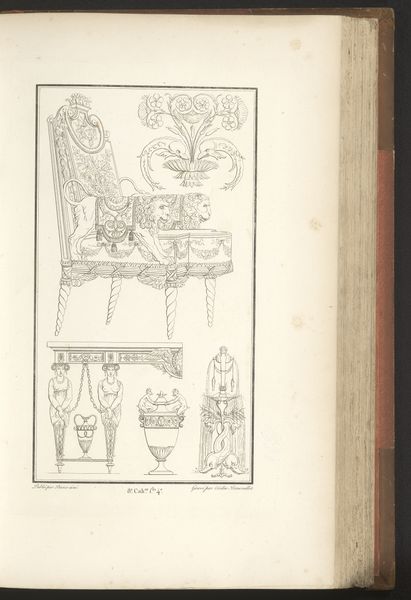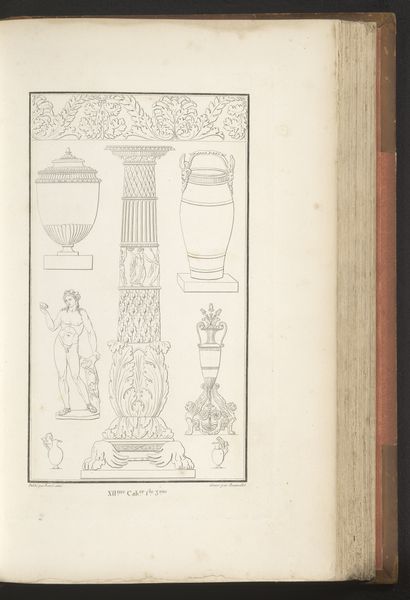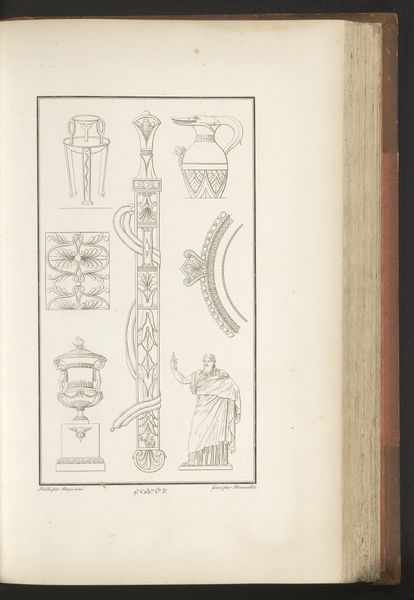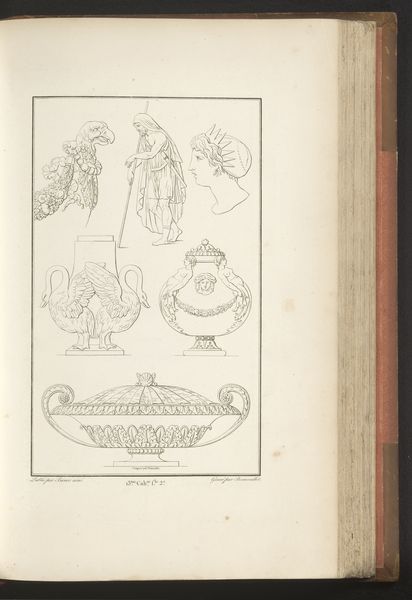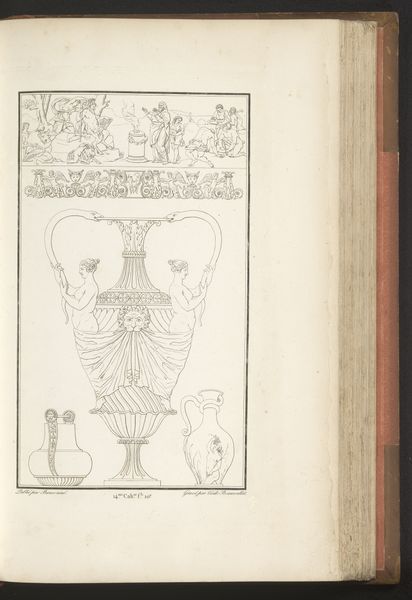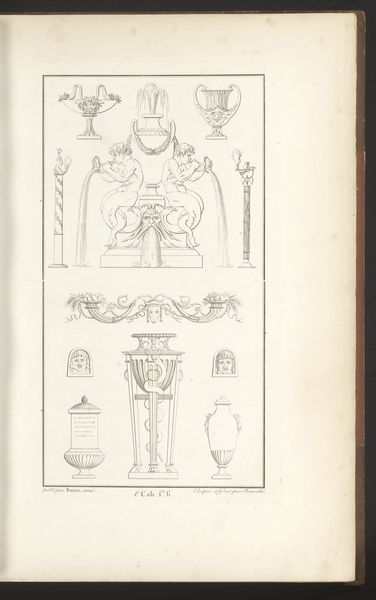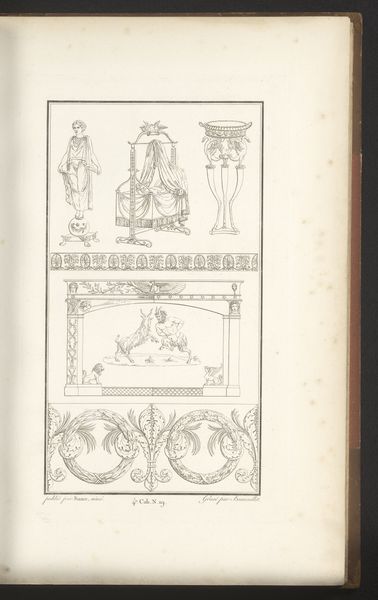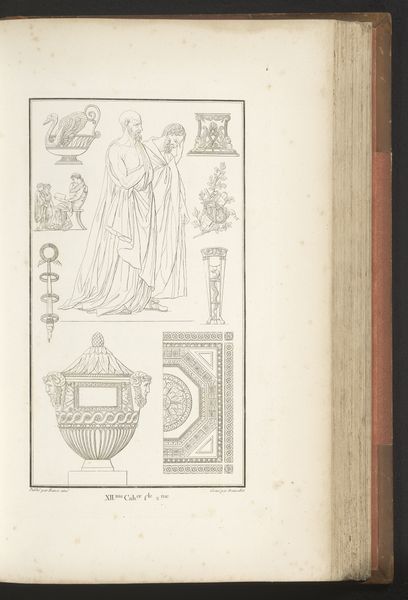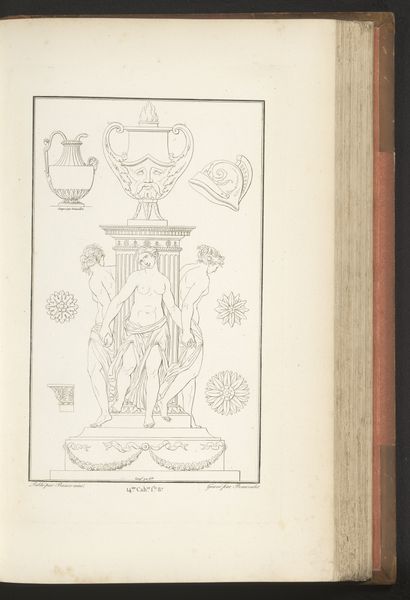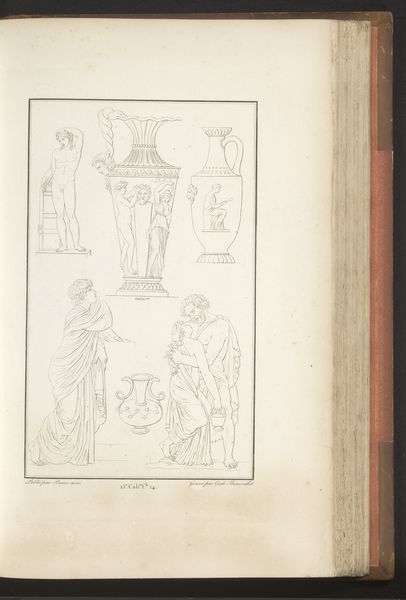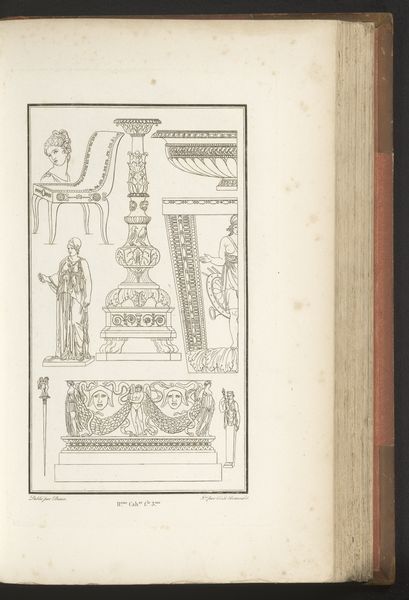
drawing, paper, ink
#
drawing
#
figuration
#
paper
#
ink
Dimensions: height mm, width mm
Copyright: Rijks Museum: Open Domain
Curator: This ink drawing from 1820, titled "Diverse ornamenten" by Pierre-Nicolas Beauvallet, offers an intriguing look at the visual vocabulary of its time. What’s your first impression? Editor: My immediate thought is that there’s an interesting tension here. It feels classical but also somewhat… playful, in its eclecticism. The arrangement of objects has a definite symbolic potential I would like to unpack. Curator: Absolutely. Beauvallet, known for his sculptures, here presents what could be considered a catalog of forms and motifs. It really gives you insight into how visual culture was disseminated in that era. These sorts of drawings were pattern books, used by artisans to inspire or directly copy architectural, decorative, or sculptural features in their own creations. Editor: You know, that feels immediately pertinent to our moment. Looking at the various forms in the drawing – the mother and child on a palm tree column, for example – I'm thinking about how representations of women, motherhood, even divinity are themselves often products of, well, design. Who decides what images circulate, and how do they become the visual shorthand of a particular culture? Curator: I'm especially drawn to the juxtaposition of seemingly disparate elements. The classical bust with a garland headdress and the neoclassical chair design; how would these features speak to patrons of the time? Were they about refined wealth, and elevated tastes? Editor: Precisely! I mean, what does it mean to render all these elements – the Janiform head or the geometric designs – with the same level of precision, suggesting a kind of equivalence? What does it mean when these figures become ornamental rather than a stand alone sculpture to be appreciated in and of themselves? What ideologies are being subtly reinforced here, and how might that effect women and marginalized populations? It makes you think about art as an active participant in shaping social structures, rather than merely reflecting them. Curator: It’s fascinating how the context of dissemination really frames its social implications, especially in this reproduction. Considering the paper material, this particular version serves the question if these "diverse ornaments" are as accessible as they were meant to be. Editor: Looking at this now, through a contemporary lens, the possibilities for re-interpretation and subversion are practically limitless. Curator: Indeed. Beauvallet’s drawing functions as both a historical record and a provocation to rethink the power of images. Editor: A thought-provoking collection indeed. Thank you for shedding more light on the subject.
Comments
No comments
Be the first to comment and join the conversation on the ultimate creative platform.

